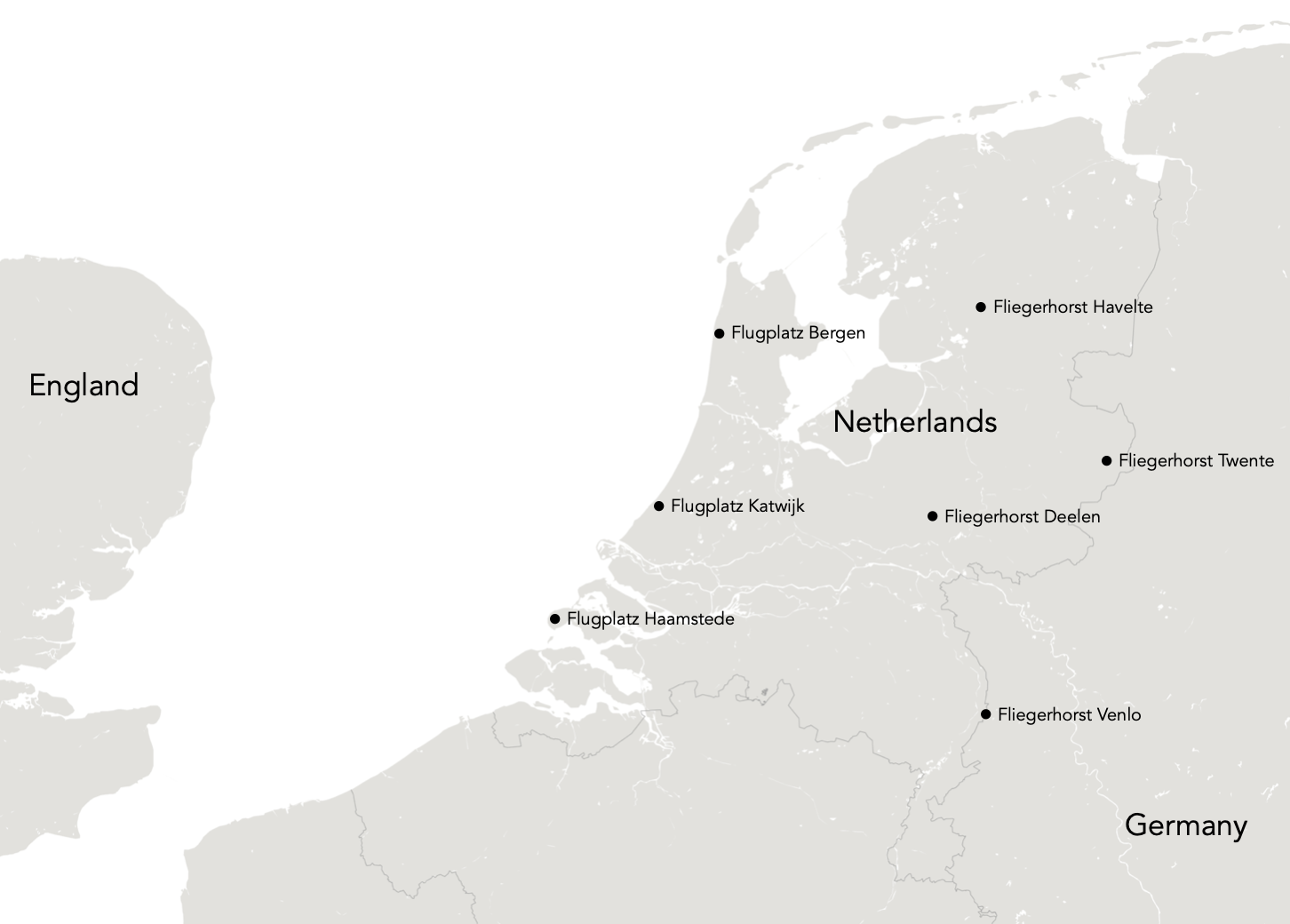During World War II, the Luftwaffe established a significant number of airfields in the occupied Netherlands. These airfields played crucial roles in the Luftwaffe’s operations over Western Europe, particularly in the Battle of Britain, the bombing of England, and later, in defense against Allied air forces. The establishment and use of these airfields reflect the strategic importance of the Netherlands due to its geographical location, flat terrain, and proximity to the United Kingdom.
At the onset of the German occupation in May 1940, the Luftwaffe quickly took control of existing Dutch airfields, such as Bergen and Haamstede, and began expanding them. The Luftwaffe also constructed new larger airfields further inland to meet operational needs. These airfields were used as bases for fighter aircraft tasked with intercepting Allied bombers and protecting German-held territories and for bomber units involved in operations over the British Isles.
Fliegerhorst Deelen was the largest German airport in the Netherlands. The airfield was significantly expanded and fortified, becoming one of the most important Luftwaffe bases in the Netherlands, equipped with extensive facilities for aircraft maintenance and repair, and heavily defended by anti-aircraft batteries.
Fliegerhorst Venlo was on the border of the Netherlands and Germany. The take-off and landing strips were in the Netherlands, the hangars were built on German territory.












